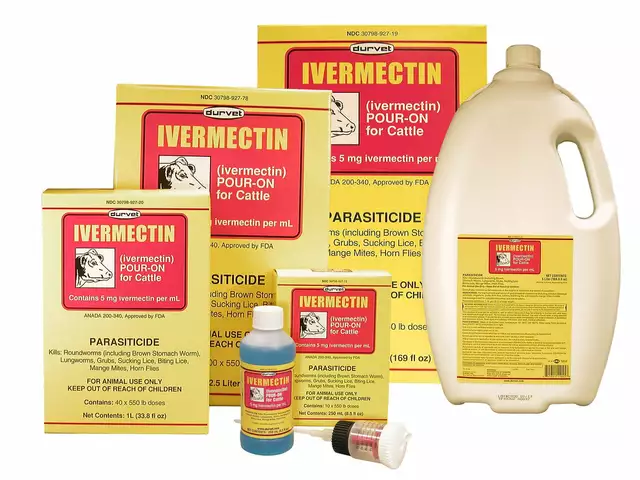If you clicked because you saw “tansy ragwort” hyped as a powerful new supplement, here’s the hard truth: this plant is known for liver toxicity, not wellness. It’s making waves online, but mostly because risky trends travel fast. What matters is whether it works and whether it’s safe. You’ll get straight answers here, plus safer options that actually have evidence behind them.
- TL;DR: Tansy ragwort (Jacobaea vulgaris, formerly Senecio jacobaea) contains pyrrolizidine alkaloids (PAs) that can damage the liver-even at low, repeated doses.
- No solid clinical evidence shows it benefits humans for any wellness goal; regulators advise minimizing exposure to PAs in food and supplements.
- Red flags: vague claims, no third-party testing, proprietary blends, and “detox” promises.
- Better choices exist for the same goals (inflammation, energy, digestion, “liver support”) that carry far less risk.
- If you already took it: stop, note the batch, watch for symptoms (fatigue, right-upper belly pain, jaundice, dark urine), and speak with a clinician about liver labs.
What is tansy ragwort, why the hype, and what does the evidence say?
Quick background: tansy ragwort is a yellow-flowered weed common in North America and Europe. Ranchers know it because it poisons livestock. The compounds behind that harm are 1,2‑unsaturated pyrrolizidine alkaloids (PAs). In humans, PAs can cause liver injury and a condition called hepatic sinusoidal obstruction syndrome (previously veno-occlusive disease). That’s not wellness territory.
So where does the hype come from? Social posts and some alt-health sites sometimes label bitter plants as “detox” or “liver cleansing.” Bitter ≠ better. There’s no solid human research showing tansy ragwort improves liver health, energy, digestion, or inflammation. What we do have: decades of toxicology pointing the other way.
Key science and safety points you can verify in primary sources:
- NIH LiverTox and published case reports document PA-containing plants (including Senecio/Jacobaea species) causing liver injury and sinusoidal obstruction syndrome, sometimes severe.
- Food safety authorities in the EU and national agencies (e.g., Germany’s BfR) advise keeping dietary PA exposure as low as reasonably achievable. A commonly cited guidance value is about 0.007 micrograms per kilogram body weight per day for total 1,2-unsaturated PAs. That’s a very small amount.
- FDA has warned against PA-containing botanical supplements in the past (comfrey is the classic example) due to the same class of toxins. The concern applies across PA plants, not just one species.
- As of 2025, the EU sets maximum levels for PAs in certain foods and supplements. Several U.S. states list tansy ragwort as a noxious weed; it’s controlled to protect animals and ecosystems-not harvested for health benefits.
What about low doses? Repeated, low-level PA exposure can still injure the liver over time. The challenge is that supplement PA content can vary widely, and labels often don’t list actual PA levels. “Natural” does not mean safe in this case.
Health claims vs reality:
| Claim you might see | What solid evidence says | Risk level | Regulatory view (2025) |
|---|---|---|---|
| “Liver detox” | No clinical trials; PAs are hepatotoxic; livers don’t need botanicals to detox | High (liver injury) | Authorities aim to minimize PA exposure; some set limits in supplements/foods |
| “Anti-inflammatory” | No human data; toxicity dominates risk/benefit calculus | High | Not recognized as safe/efficacious |
| “Energy & mood” | No credible evidence | High | Not approved for such use |
| “Digestive support” | No controlled human studies | High (liver risk outweighs speculative benefit) | Risk management of PA exposure in place in EU; U.S. oversight focuses on safety |
As someone raising two kids in Austin, I care a lot about what plants go in our yard. On a trail run near the Greenbelt, I’ve seen ragwort patches roped off because of the risk to dogs and livestock. That same plant turning up in a wellness bottle should give anyone pause.
Bottom line on efficacy: there isn’t a credible human study showing a benefit. On safety: there’s a lot showing harm potential. When the risk is real and the benefit is unproven, you have your answer.
Symptoms to take seriously after exposure (especially over weeks): fatigue, nausea, loss of appetite, right-upper belly pain, dark urine, jaundice (yellowing of eyes/skin), swelling in legs or abdomen. People with existing liver disease, those who drink alcohol heavily, and anyone pregnant or breastfeeding face even higher risk.
Label aliases to watch for: Jacobaea vulgaris, Senecio jacobaea, common ragwort, stinking willie. If any of these show up on an ingredient panel, or if a product markets itself as ragwort extract, walk away. If you see “PA-free” claims, be skeptical-those require rigorous, validated testing on each batch, and you should expect a recent third-party certificate of analysis, not just a marketing line.

How to evaluate products, avoid risky PAs, and pick safer alternatives
Here’s a simple rule I use at home: if a plant is famous for poisoning cattle, it doesn’t belong in my supplement drawer. Use that filter first, then do a quick check using the steps below.
Quick screening checklist for plant-based supplements:
- Search the Latin name. If it’s Jacobaea or Senecio, that’s a PA red flag.
- Look for independent lab testing (ISO/IEC 17025) and a recent certificate of analysis that specifically measures PAs, heavy metals, pesticides, and microbes.
- Avoid proprietary blends that hide dose per ingredient; hidden dosing can hide risk.
- Skip big claims (“detox,” “cure,” “flush toxins”). Biology doesn’t work that way.
- Check for known interactions if you take meds (especially liver-metabolized drugs).
Decision guide:
- Does the ingredient have known toxic classes (e.g., PAs)? If yes, stop here-do not buy.
- No known toxins? Is there at least plausible human evidence for your goal? If no, pass.
- If yes, can you verify dose and third-party testing? If no, pass. If yes, consider a trial with monitoring.
What to use instead of a tansy ragwort supplement if your goal is…
- Liver “support”: Be wary of the whole “detox” framing. Your liver detoxes on its own. That said, some options have reasonable safety profiles and supportive data for specific markers:
- Milk thistle (silymarin): Mixed data in chronic liver disease; generally well-tolerated. Typical dose: 140-210 mg silymarin 2-3x/day.
- N-acetylcysteine (NAC): Strong hospital use for acetaminophen toxicity; as a supplement, it supports glutathione. Dose: 600-1200 mg/day; talk to your clinician if you take other meds.
- Artichoke leaf: Some small trials for dyspepsia and lipids. Dose: 320-640 mg extract, standardized to caffeoylquinic acids.
- Inflammation: Consider curcumin (with or without piperine; be mindful of drug interactions), omega‑3 fish oil, or boswellia. These have human data for joint comfort and inflammatory markers.
- Digestive comfort: Ginger, peppermint oil enteric-coated capsules, and chamomile have far better safety track records.
- Energy/mood/stress: Rhodiola rosea (standardized to rosavins/salidroside) and ashwagandha (standardized to withanolides) have human studies for stress and perceived energy. Avoid if pregnant without medical guidance.
Side-by-side quick picks:
| Goal | Alternative | Typical dose | Evidence snapshot | Key caution |
|---|---|---|---|---|
| Liver markers | Milk thistle (silymarin) | 140-210 mg, 2-3x/day | Mixed but favorable safety; used adjunctively | May alter drug metabolism; consult clinician |
| Oxidative support | N-acetylcysteine (NAC) | 600-1200 mg/day | Strong clinical use in overdose; supplemental role plausible | GI upset; timing with meds |
| Inflammation | Curcumin | 500-1000 mg/day standardized extract | Randomized trials for joint comfort | Interactions (anticoagulants); choose tested brands |
| Digestion | Ginger | 500-1000 mg/day extract | Human data for nausea and dyspepsia | May thin blood at high doses |
| Stress/energy | Rhodiola rosea | 200-400 mg/day standardized | Trials show reduced fatigue and stress | Possible jitteriness; avoid late evening |
A few smart habits beat any “detox” formula:
- Keep alcohol moderate or skip it while trying any new liver-related supplement.
- Space supplements 2-3 hours from prescription meds unless your clinician advises otherwise.
- Get baseline labs if you plan to test a liver-targeted supplement for more than a month.
- Use brands with transparent, batch-level testing you can actually see (PDFs, lot numbers).
Note on teas, honey, and cross-contamination: PA plants can contaminate herbal teas and honey when weeds grow near crops. Regulators in Europe addressed this in 2022 by setting maximum levels for PAs in these foods. In practice, buy from producers who screen for PAs, and rotate brands if you drink a lot of herbal teas daily.

FAQs, red flags, and next steps (including if you already took it)
Is any dose of tansy ragwort safe? There’s no established safe oral dose for humans. Toxicity depends on the specific PAs present, dose, duration, and your own liver status. Because damage can build up quietly, the precautionary approach is to avoid it.
What about topical or essential oil versions? With PA plants like comfrey, topical use has still raised concerns because some PAs can be absorbed through the skin, and essential oils can be contaminated or irritating. With tansy ragwort in particular, there’s no benefit-based reason to risk it on skin either.
Can PA-free extracts make it safe? In theory, removing PAs could reduce risk. In practice, this requires validated testing of every batch, and supplements are not pre-approved by regulators. Most products don’t publish real PA test results. If a company claims “PA-free,” ask for a current certificate of analysis, method used, detection limits, and lab accreditation. If they can’t provide that, treat the claim as marketing, not proof.
What if I already used a product containing tansy ragwort? Here’s a simple plan you can follow:
- Stop using the product immediately.
- Save the bottle/lot number and any receipts; this helps if you report an issue.
- Watch for symptoms over the next 2-8 weeks: fatigue, nausea, abdominal pain (right side), itching, dark urine, yellowing of eyes/skin, leg or belly swelling.
- Talk to a clinician about getting basic liver labs (AST, ALT, GGT, bilirubin, INR) if you used it for more than a few days or have symptoms.
- Don’t try to “flush” it with more supplements. Rest, hydration, and time are safer.
- Report any serious adverse effects through your national safety program (e.g., FDA’s MedWatch in the U.S.).
Who should absolutely avoid PA-containing botanicals? People with any liver condition, those on hepatotoxic medications (like high-dose acetaminophen or methotrexate), heavy alcohol users, children, pregnant or breastfeeding people.
How do I spot tansy ragwort on a label? Look for these names: Jacobaea vulgaris, Senecio jacobaea, common ragwort, stinking willie. If the supplement uses a proprietary blend without Latin names, that’s a red flag-don’t buy.
Is there any legitimate medical use? Not in mainstream medicine. If a product markets tansy ragwort for a disease, be cautious-that drifts into illegal drug claims territory for supplements.
Why do people still promote it? Hype cycles favor bold claims, and bitter herbs get labeled as “detox” long before data catches up. It’s also cheaper to market a weed than to run proper trials.
What do credible sources say? Toxicology texts, NIH LiverTox, the World Health Organization, and European food safety bodies consistently warn about PA exposure. Regulators focus on reducing it in the food supply, not adding it to supplement capsules.
My quick take as a dad and a label hawk: what you remove from your routine is as important as what you add. I’d rather spend my money on safer, tested basics (sleep, protein, omega‑3s) than gamble on a weed famous for hurting livers. At home, Clara and I keep our routine boring on purpose-it works.
Next steps based on your situation:
- If you’re just curious about wellness trends: Skip this one. Trends come and go. Stick to proven habits and a short list of vetted supplements.
- If you’re already supplement-savvy: Add PA screening to your due diligence, especially for new or niche botanicals.
- If you have liver issues or take multiple meds: Run any new supplement by your clinician first. Bring the exact label.
- If you manage a household (parents, caregivers): Teach kids not to pick or chew unknown plants outside, especially yellow-flowered weeds. In Texas, ragwort can pop up along trails and fields.
How to future-proof your supplement choices in 5 minutes:
- Set a personal “no known toxins” policy (PAs, aristolochic acids, etc.).
- Pick 2-3 brand families with transparent batch testing and stick with them.
- Decide your top 1-3 goals (sleep, joint comfort, energy) and ignore the rest.
- Keep a simple log: product, lot, start date, any effects, and any lab results.
- Reassess every 90 days; if there’s no clear benefit, drop it.
If you still want to experiment for a specific goal, do it with safer tools, one at a time, with a clear stop rule. That’s how you learn what actually works for your body without taking on hidden risks.
Final word on tansy ragwort: there’s nothing here that beats real sleep, a protein-anchored diet, basic movement, and a few well-chosen, well-tested supplements. Hype fades. Your liver has to stick around and do its job every day. Treat it that way.






Sandra Perkins
1 September 2025 - 13:18 PM
Sounds like another trendy poison masquerading as a miracle cure.
rama andika
12 September 2025 - 05:18 AM
Oh sure, the shadowy cabal behind the supplement industry is just trying to "help" us achieve cosmic enlightenment with a dash of liver‑destroying weed. They hide it behind buzzwords like "detox" and "ancient secret" while the real magic is how fast the hype spreads. If you read the fine print you’ll see “PA” isn’t a new yoga pose, it’s a poison. The fact that farmers label it a no‑xious weed should be a neon sign for us. They probably paid a PR firm to paint it green and wholesome. Meanwhile, the same people push turmeric as a miracle cure, yet no one mentions the heavy metals sometimes lurking there. Bottom line: don’t fall for the drama, stick to stuff that’s been vetted by real science, not by internet conspiracies.
Kenny ANTOINE-EDOUARD
22 September 2025 - 21:18 PM
When you examine the toxicology data, the risk profile of pyrrolizidine alkaloids outweighs any unproven benefit. Repeated low‑dose exposure can accumulate, leading to subclinical liver injury that may go unnoticed until more severe dysfunction appears. For anyone seeking liver support, there are well‑studied options such as silymarin, NAC, or artichoke leaf that have favorable safety margins and documented mechanisms. It’s also prudent to obtain a baseline liver panel before starting any new botanical, especially if you have pre‑existing liver conditions or are on hepatically metabolized medications. Lastly, always verify that the manufacturer provides a recent third‑party analysis confirming PA levels are below regulatory limits; without that, the product is essentially a gamble.
Craig Jordan
3 October 2025 - 13:18 PM
It’s amusing how quickly the wellness crowd latches onto any obscure plant once a single influencer mentions it in a 30‑second TikTok. The narrative usually follows the same formula: “this ancient herb was used by monks to cleanse their souls and now you can get it in a capsule.” Yet no one bothers to mention that the very same herb is listed by the USDA as a noxious weed because it kills livestock. The underlying chemistry – pyrrolizidine alkaloids – has been associated with hepatic sinusoidal obstruction syndrome for decades, a condition that can be fatal if not caught early. Still, the market loves the word “detox” and will rebrand toxicity as benefit. You’ll find the product label riddled with vague claims, proprietary blends, and an absence of any genuine third‑party testing data. In practice, the dosage of these alkaloids varies wildly between batches, making any risk assessment virtually impossible. Regulators in the EU have set strict limits for PA content, but enforcement is uneven and many supplements slip through the cracks. The bottom line is that the risk‑benefit calculus is heavily stacked against the supplement; there is zero robust clinical evidence of efficacy, yet a well‑documented history of liver injury. Consumers would be better served investing in sleep hygiene, a balanced diet, and supplements with a solid safety record rather than chasing the next botanical fad. Moreover, the marketing tactics exploit fear of “toxins” while simultaneously exposing users to a known toxin. This paradox underscores the importance of critical thinking and not taking promotional hype at face value. In short, when a herb that kills cattle shows up in a wellness bottle, the safest response is to walk away.
Jeff Quihuis-Bell
14 October 2025 - 05:18 AM
Alright folks, if you’re looking for real results, ditch the mystery weed and focus on proven allies. Milk thistle, NAC, and turmeric have solid data and are generally safe when you keep an eye on dosing. Stay hydrated, get solid sleep, and remember that consistency beats any quick‑fix hype. Your liver will thank you, and you’ll avoid the nightmare of hidden PA exposure. Let’s channel that energy into something that actually works!
Jessica Tang
24 October 2025 - 21:18 PM
I appreciate the thorough breakdown; sticking to supplements with clear testing protocols is the sensible route.
Tracy Winn
4 November 2025 - 12:18 PM
Wow-another “miracle” product that turns out to be a liver‑destroying nightmare, huh?; I’ve seen this pattern too many times; you read the label, it’s full of Latin names you can’t pronounce, and the marketing team throws around “detox” like it’s a badge of honor; skip it, save your money, and keep an eye on those lab results; the safer alternatives mentioned are far more reliable, in my opinion.
Jessica Wheeler
15 November 2025 - 04:18 AM
Choosing a supplement that threatens the very organ it promises to help is morally indefensible; we have a responsibility to protect our bodies, not gamble with poisons.
Mikayla Blum
25 November 2025 - 20:18 PM
Thinking about the whole "detox" buzz, it feels like trying to clean a window by smearing grease on it; you just end up seeing the same smudge later. Better to use clear, tested tools rather than mystic shortcuts.
Jo D
6 December 2025 - 12:18 PM
Let’s cut the hype: PA‑laden ragwort is a pharmacological liability, not a nutraceutical marvel; your cortisol spikes won’t thank you.
Sinead McArdle
17 December 2025 - 04:18 AM
Thank you for the clear summary; it’s helpful to have practical guidance without the sensationalism.
Katherine Krucker Merkle
27 December 2025 - 20:18 PM
Great point about needing third‑party testing; I’ve started checking batch certificates before buying any new supplement, and it’s saved me a lot of doubt.